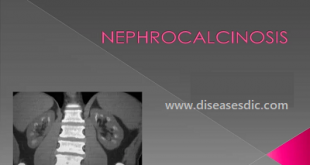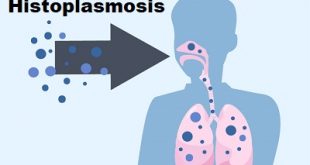Definition
Nail fungus is a common condition that begins as a white or yellow spot under the tip of your fingernail or toenail. As the fungal infection goes deeper, nail fungus may cause your nail to discolor, thicken and crumble at the edge. It can affect several nails. Nail fungus is also called onychomycosis (on-ih-koh-my-KOH-sis). When fungus infects the areas between your toes and the skin of your feet, it’s called athlete’s foot (tinea pedis).
Nail fungus
Epidemiology
The incidence of onychomycosis has been reported to be 2-13% in North America. A multicenter survey in Canada showed the prevalence of onychomycosis at 6.5%. Onychomycosis accounts for half of all nail disorders, and onychomycosis is the most common nail disease in adults. Toenails are much more likely to be infected than fingernails. Thirty percent of patients with a cutaneous fungal infection also have onychomycosis. The incidence of onychomycosis has been increasing, owing to such factors as diabetes, immunosuppression, and increasing age. Studies in the United Kingdom, Spain, and Finland found prevalence rates of onychomycosis to be 3-8%.
Race
Onychomycosis affects persons of all races.
Sex
Onychomycosis affects males more commonly than females. However, candidal infections are more common in women than in men.
Age
Studies indicate that adults are 30 times more likely to have onychomycosis than children. Onychomycosis has been reported to occur in 2.6% of children younger than 18 years but as many as 90% of elderly people.
Types
Distal Subungual Onychomycosis (DSO)
Distal subungual onychomycosis is by far the most common kind of toenail fungus. It’s also one of the most unpleasant forms of fungal toenail infection, because of its long lasting symptoms. That being said, it can be tackled with appropriate and timely treatment, which we’ll come back to later.
White Superficial Onychomycosis (WSO)
White superficial onychomycosis is the next most common form of fungal infection, after DSO. White superficial onychomycosis, as per the name, is only superficial: it affects the nail, not the nail bed. This means that it is much quicker and much easier to treat, which is good news.
Candida Onychomycosis (CO)
Candida onychomycosis is relatively rare and is caused by a different mechanism than WSO and DSO. CO is caused by a yeast infection, as opposed to a fungal infection, but can operate in the same way. It also has a number of similar symptoms, but there are tell-tale signs that you’re suffering from CO.
Proximal Subungual Onychomycosis (PSO)
Proximal subungual onychomycosis is caused by dermatophytes, the same keratin eating fungi that cause DSO and WSO. But unlike the other two fungal infections, PSO is specifically common in people who are infected with HIV.
Risk factors
Factors that can increase your risk of developing nail fungus include:
- Being older, owing to reduced blood flow, more years of exposure to fungi and slower growing nails
- Sweating heavily
- Having a history of athlete’s foot
- Walking barefoot in damp communal areas, such as swimming pools, gyms and shower rooms
- Having a minor skin or nail injury or a skin condition, such as psoriasis
- Having diabetes, circulation problems or a weakened immune system
Causes
Most fungal nail infections occur as a result of the fungi that cause athlete’s foot infecting the nails.
These fungi often live harmlessly on your skin, but they can sometimes multiply and lead to infections. The fungi prefer warm, dark and moist places like the feet.
You’re more likely to get a fungal nail infection if you:
- Don’t keep your feet clean and dry
- Wear shoes that cause your feet to get hot and sweaty
- Walk around barefoot in places where fungal infections can spread easily, such as communal showers, locker rooms and gyms
- Have damaged your nails
- Have a weakened immune system
- Have certain other health conditions, such as diabetes, psoriasis or peripheral arterial disease
Fungal nail infections can be spread to other people, so you should take steps to avoid this (see below) if you have an infection.
Symptoms of nail fungus
A fungal nail infection may not cause any obvious symptoms at first.
As it progresses, the infection can cause:
- Discolouration of the nail – it may turn white, black, yellow or green
- Thickening and distortion of the nail – it may become an unusual shape or texture and be difficult to trim
- Pain or discomfort – particularly when using or placing pressure on the affected toe or finger
- Brittle or crumbly nails – pieces may break off and come away completely
Sometimes the skin nearby may also become infected and be itchy and cracked or red and swollen.
Complications of nail fungus
- If Toenail Fungus or Toe Fungus becomes severe and is left untreated it may become severely painful and may damage the nails permanently.
- Also, if the infection spreads beyond the nails then it can lead to many other complications, especially if you have a compromised immune system or are suffering from diabetes as due to such conditions there is decreased flow to the toe region and even minor infection like Toenail Fungus or Toe Fungus may cause serious complications.
Diagnosis and test
- In order to diagnose nail fungus infections, a doctor will usually examine debris that is scraped from underneath the nail. The nail scrapings will be used in tests, such as a potassium hydroxide (KOH) smear, or a fungal culture. The KOH test can be quickly performed, while the fungal culture can take weeks.
- Physicians must be careful when diagnosing fungal infections of the nail because several other conditions can result in similar symptoms. These include psoriasis, lichen planus, contact dermatitis, trauma, nail bed tumor, eczema, and yellow nail syndrome.
Treatment and medications
Over-the-counter products aren’t usually recommended to treat nail infections because they don’t provide reliable results. Instead, your doctor may prescribe an oral antifungal medication, such as:
- Terbinafine (Lamisil)
- Itraconazole (Sporanox)
- Luconazole (Diflucan)
- Griseofulvin (Gris-Peg)
You may use other antifungal treatments, such as antifungal nail lacquer or topical solutions. These treatments are brushed onto the nail in the same way that you would apply nail polish. Depending on the type of fungus causing the infection, as well as the extent of the infection, you may have to use these medications for several months. Topical solutions are not generally effective in curing toenail fungal infections.
Treatment isn’t guaranteed to rid your body of the fungal infection completely. In almost half of all cases, the fungal nail infection will return. Complications from fungal infection are also possible.
Prevention of nail fungus
Making a few simple lifestyle changes can help prevent a fungal infection of the nails. Taking good care of your nails by keeping them well trimmed and clean is a good way to prevent infections. You should also avoid injuring the skin around your nails. If you’re going to have damp or wet hands for an extended amount of time, you may want to wear rubber gloves.
Other ways to prevent fungal infections of the nails include:
- Using antifungal sprays or powders regularly
- Washing your hands after touching infected nails
- Drying your feet well after showering, especially between your toes
- Getting manicures or pedicures from trustworthy salons
- Using your own items for manicures or pedicures
- Wearing socks that minimize moisture
- Avoiding being barefoot in public places
- Reducing your use of artificial nails and nail polish
 Diseases Treatments Dictionary This is complete solution to read all diseases treatments Which covers Prevention, Causes, Symptoms, Medical Terms, Drugs, Prescription, Natural Remedies with cures and Treatments. Most of the common diseases were listed in names, split with categories.
Diseases Treatments Dictionary This is complete solution to read all diseases treatments Which covers Prevention, Causes, Symptoms, Medical Terms, Drugs, Prescription, Natural Remedies with cures and Treatments. Most of the common diseases were listed in names, split with categories.








I suffer from the Disease on hand. All my 10 finger nails were affected with the disease . Pls l need a solution to the problem. Thank you.
please consult Dermatologists for treatment.
my case is the whole of my ten fingers are badly infected, it started from my toe and now it’s has affected the whole of my nails. I can’t go out without an artificial nails. please what can I do to cure this? it’s really embarrassing I can’t go to the saloon for pedicure due to the way people will stare at me.
U can treat with antifungal medication, such as:
Terbinafine (Lamisil)
Itraconazole (Sporanox)
Luconazole (Diflucan)
Griseofulvin (Gris-Peg).
its better to consult doctor before taking those medications.
I am 7 yrs old with d case. It started inbetween my two left little toes and later affected 5 selected fingers of my both hands. I indulged in using the affected areas with hot object due to excessive itching. Once I did that, pus with foul odour usually gust out. Until recently the spread reduces to d tallest finger in my left hand. As at now I ve stopped washing with detergents bc it gets worst if I do. Biting, swollen round the fingernails and foul odour still persist, Pls what can l do?
Please consult a doctor to reduce serious effects in future.
wonderful App first time I checked
today.every one must have this in
their smart phones. thank you.
awesome app
how to use loceryl nail lacquer
Step 1. File the nail
Before the first application, file down the infected areas of nail, including the nail surface, as much as possible using the nail file provided.
CAUTION: Do not use nail files used for infected nails on healthy nails, otherwise you may spread the infection.
To prevent the spread of infection take care that no one else uses the files from your kit.
Step 2. Clean the nail
Use one of the swabs provided to clean the nail surface.
Repeat steps 1 and 2 for each affected nail.
Step 3. Take some lacquer from the bottle
Dip the applicator into the bottle of nail lacquer. The lacquer must not be wiped off on the edge of the bottle before it is applied.
Step 4. Apply the lacquer
Apply the nail lacquer evenly over the entire surface of the nail.
Repeat steps 3 and 4 for each affected nail.
Step 5. Allow to dry
Let the treated nail(s) dry for approximately 3 minutes.
Wait at least 10 minutes before applying cosmetic nail varnish.
Step 6. Clean the applicator
The applicator provided is re-usable. However, it is important to clean it thoroughly after completing each treatment procedure, using the same swab you used for nail cleansing. Avoid touching newly treated nails with the swab.
thanks for this information. my right hand nail the middle is turning brown and when I deep too much in water it pains me I have tried antibiotics but it’s persistent
I fear that even others will get the same problem what preventive method can I apply for protection of others to be prevented from the infection and to heal the damaged one
thanks
Please consult a dermatologist ASAP.
but if it persist can we removed the nail
No, unless your nail becomes dead you should not remove it but it is good to consult a doctor for its permanent solution.
I’ve been on clobetasol for nearly 3 years now. However, the lichen planus clears up some days but others, as if almost worst. What can i do, are there other topical remedies that really work?
High-potency topical corticosteroids are first-line therapy for all forms of lichen planus, including cutaneous, genital, and mucosal erosive lesions. In addition to clobetasol, topical tacrolimus appears to be an effective treatment for vulvovaginal lichen planus.